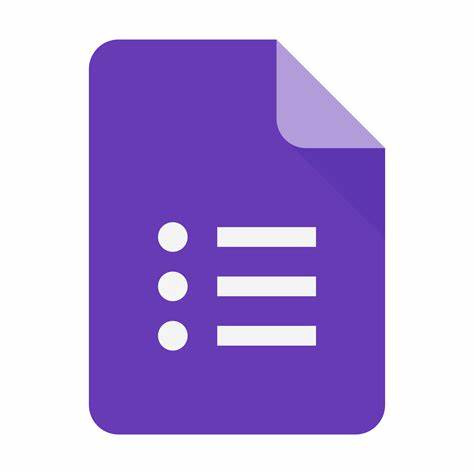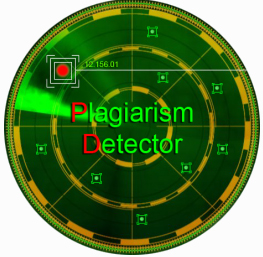OPTIMIZING ELECTRICITY SUBSIDIES: A TOPSIS-BASED DECISION-MAKING APPROACH
Abstract
A individual or household is said to be in poverty if their income is insufficient to cover even the most basic requirements. According to BPS, 40% of Indonesians live in the country with the weakest economy. The use of power subsidies is one of the government's strategies for combating poverty. To combat poverty, the government works with PT. PLN to implement an electrical subsidy scheme that distributes payments to disadvantaged neighborhoods. The goal of the subsidy is to ensure the availability of power while assisting underprivileged customers and those who haven't heard from PT. PLN so they may take part in enjoying electrical energy. However, there are still challenges when there are several procedures, which makes it difficult to make judgments since they must take into account numerous factors. Using TOPSIS to solve 10 possibilities, including the following, is one way to get around the FMADM's various requirements: job, income, dependents, vehicle assets, home ownership, building area, source of drinking water, electrical power range, kind of floor, and type of house wall. According to the study's precise findings, only 11 residents out of 20 submissions received immediate recommendations for receiving power subsidies without having to wait a lengthy period. Additionally, although 9 people received recommendations for aid, only 1 received a recommendation against receiving support.
Full Text:
PDFReferences
Y. Madame and A. Wahyu, “Klasifikasi Rumah Tangga Penerima Subsidi Listrik di Provinsi Gorontalo Tahun 2019 dengan Metode K-Nearest Neighbor dan Support Vector Machine Electricity Subsidy Recipient Households Classification in Gorontalo Province in 2019 using K-Nearest Neighbor a,” JUSTIN (Jurnal Sist. dan Teknol. …, vol. 10, no. 1, pp. 63–68, 2022, doi: 10.26418/justin.v10i1.51210.
Hylenarti Hertyana, “Sistem pendukung keputusan penentuan karyawan terbaik menggunakan metode topsis studi kasus amik mahaputra riau,” Intra-Tech, vol. 2, no. 1, pp. 43–44, 2018, [Online]. Available: https://www.journal.amikmahaputra.ac.id/index.php/JIT/article/view/27.
B. H. Yanto and Y. Yunus, “Evaluasi Penentuan Kelayakan Pemberian Subsidi Listrik dengan Metode MFEP,” J. Inform. Ekon. Bisnis, vol. 3, pp. 109–114, 2021, doi: 10.37034/infeb.v3i3.91.
D. A. Ermawaty, “Model Kesesuaian Kebijakan Subsidi Listrik,” Syntax Lit. ; J. Ilm. Indones., vol. 5, no. 1, p. 54, 2020, doi: 10.36418/syntax-literate.v5i1.856.
S. Fauziah and S. Muryani, “Decision Support System Untuk Menetapkan Daya Listrik Bagi Pelanggan PLN,” J. Perspekt., vol. 17, no. 1, pp. 22–27, 2019, doi: 10.31294/jp.v17i1.5069.
A. V. Demidovskij, “Comparative Analysis of MADM Approaches: ELECTRE, TOPSIS and Multi-level LDM Methodology,” Proceedings of 2020 23rd International Conference on Soft Computing and Measurements, SCM 2020. pp. 190–193, 2020, doi: 10.1109/SCM50615.2020.9198752.
S. Sumanto, K. Indriani, L. S. Marita, and A. Christian, “Supplier Selection Very Small Aperture Terminal using AHP-TOPSIS Framework,” J. Intell. Comput. Heal. Informatics, vol. 1, no. 2, p. 39, 2020, doi: 10.26714/jichi.v1i2.6290.
Pinedo and Michael.L, “Fuzzy MADM,” Sched. Theory, Algorithms, Syst., vol. 2011, no. semnasIF, p. 55, 2012.
Y. Liu, H. Zhang, X. Zhang, S. Qing, A. Zhang, and S. Yang, “Optimization of combustion characteristics of blended coals based on TOPSIS method,” Complexity, vol. 2018, 2018, doi: 10.1155/2018/4057983.
M. Tyagi, P. Kumar, and D. Kumar, “A hybrid approach using AHP-TOPSIS for analyzing e-SCM performance,” Procedia Eng., vol. 97, pp. 2195–2203, 2014, doi: 10.1016/j.proeng.2014.12.463.
A. P. Pangaribuan and R. Hamdani, “Decision Support Systems to Determine Electronic Sales Products using The TOPSIS Method,” Login J. Teknol. …, vol. 14, no. 2, pp. 244–249, 2020, [Online]. Available: http://www.login.seaninstitute.org/index.php/Login/article/view/54%0Ahttp://www.login.seaninstitute.org/index.php/Login/article/download/54/73.
S. Sumanto and S. Sumarna, “Alternatif Pemilihan Supplier Barang IT VSAT Terbaik dengan Metode Technique For Order Preference By Similarity To an Ideal Solution (TOPSIS),” J I M P - J. Inform. Merdeka Pasuruan, vol. 4, no. 1, pp. 31–36, 2019, doi: 10.37438/jimp.v4i1.196.
A. Çalık, “A novel Pythagorean fuzzy AHP and fuzzy TOPSIS methodology for green supplier selection in the Industry 4.0 era,” Soft Comput., vol. 25, no. 3, pp. 2253–2265, 2021, doi: 10.1007/s00500-020-05294-9.
Y. Çelikbilek and F. Tüysüz, “An in-depth review of theory of the TOPSIS method: An experimental analysis,” J. Manag. Anal., vol. 7, no. 2, pp. 281–300, 2020, doi: 10.1080/23270012.2020.1748528.
V. G. Venkatesh, A. Zhang, E. Deakins, S. Luthra, and S. Mangla, “A fuzzy AHP-TOPSIS approach to supply partner selection in continuous aid humanitarian supply chains,” Ann. Oper. Res., vol. 283, no. 1–2, pp. 1517–1550, Dec. 2019, doi: 10.1007/s10479-018-2981-1.
A. N. Karabayir, A. R. Botsali, Y. Kose, and E. Cevikcan, Supplier selection in a construction company using fuzzy AHP and fuzzy TOPSIS, vol. 1029. Springer International Publishing, 2020.
S. M. Ali, S. M. A. Burney, and S. Y. Khan, “Fuzzy-AHP-TOPSIS: An integrated multi-criteria decision support system for supplier selection in Pakistan’s textile industry,” Ijcsns, vol. 20, no. April, pp. 91–99, 2020, [Online]. Available: https://www.researchgate.net/profile/Syed_Mubashir_Ali/publication/340862143_Fuzzy-AHP-TOPSIS_An_integrated_multi-criteria_decision_support_system_for_supplier_selection_in_Pakistan’s_textile_industry/links/5ec400b4458515626cb80d59/Fuzzy-AHP-TOPSIS-An-int.
S. Albooyeh and F. Yaghmaie, “Evaluation of knowledge management model in construction companies using the fuzzy AHP and fuzzy TOPSIS,” Int. J. Bus. Excell., vol. 18, no. 1, pp. 64–97, 2019, doi: 10.1504/IJBEX.2019.099451.
M. O. Okwu and L. K. Tartibu, “Sustainable supplier selection in the retail industry: A TOPSIS- and ANFIS-based evaluating methodology,” Int. J. Eng. Bus. Manag., vol. 12, 2020, doi: 10.1177/1847979019899542.
M. Akram, A. Luqman, and J. C. R. Alcantud, “Risk evaluation in failure modes and effects analysis: hybrid TOPSIS and ELECTRE I solutions with Pythagorean fuzzy information,” Neural Comput. Appl., vol. 33, no. 11, pp. 5675–5703, 2021, doi: 10.1007/s00521-020-05350-3.
M. Zhang and G. xi Li, “Combining TOPSIS and GRA for supplier selection problem with interval numbers,” J. Cent. South Univ., vol. 25, no. 5, pp. 1116–1128, 2018, doi: 10.1007/s11771-018-3811-y.
A. K. Bera, D. K. Jana, D. Banerjee, and T. Nandy, “Supplier selection using extended IT2 fuzzy TOPSIS and IT2 fuzzy MOORA considering subjective and objective factors,” Soft Comput., vol. 24, no. 12, pp. 8899–8915, 2020, doi: 10.1007/s00500-019-04419-z.
J. M. Sánchez-Lozano, M. S. García-Cascales, and M. T. Lamata, “Comparative TOPSIS-ELECTRE TRI methods for optimal sites for photovoltaic solar farms. Case study in Spain,” J. Clean. Prod., vol. 127, pp. 387–398, 2016, doi: 10.1016/j.jclepro.2016.04.005.
D. M. Utama, “AHP and TOPSIS Integration for Green Supplier Selection: A Case Study in Indonesia,” Journal of Physics: Conference Series, vol. 1845, no. 1. 2021, doi: 10.1088/1742-6596/1845/1/012015.
DOI: https://doi.org/10.33365/jti.v18i1.3608
Refbacks
- There are currently no refbacks.
Copyright (c) 2024 Ruhul Amin, Ade Cristian, Ummu radiyah, Sumanto, Harianto, Ahmad Yani

This work is licensed under a Creative Commons Attribution-ShareAlike 4.0 International License.
JURNAL TEKNOINFO
Published by Universitas Teknokrat Indonesia
Organized by Prodi S1 Informatika FTIK Universitas Teknokrat Indonesia
W: http://ejurnal.teknokrat.ac.id/index.php/teknoinfo/index
E : teknoinfo@teknokrat.ac.id.
Jl. Zainal Abidin Pagaralam, No.9-11, Labuhan Ratu, Bandarlampung

This work is licensed under a Creative Commons Attribution-ShareAlike 4.0 International License.
Jumlah Pengunjung : View Teknoinfo StatsCounter



















